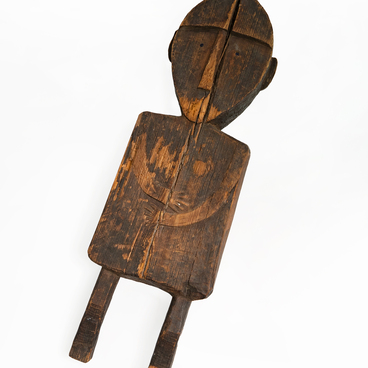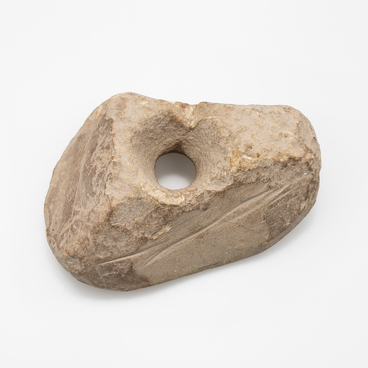There are several spearheads in the museum’s collection. The presented exhibit was made of tuff sandstone more than 7,500 years ago. The stone was treated on both sides with leaf-shaped flake scars to create a hunting tool for a large animal — a bear or an elk.
The southern part of the Russian Far East, including the Lower Amur region, is a special area of the northern part of the Asian continent, where a highly cultured hearth developed back in the Stone Age. This was facilitated by natural geographical conditions, and above all by the Amur River basin, where the exhibit was found.
The Amur River has left its mark on all spheres of human existence. This waterway connected the regions of Central Asia and the eastern Pacific coast. Since ancient times, the Amur has served as a path for the settlement of the island world, the coast of Northeast Asia and North America. A decisive role in the development of Stone Age cultures was played by the absence of an extensive glacial cover here in the Upper Pleistocene (Ice Age).
The flora and fauna of the region has preserved many relict forms, since at the end of the Pleistocene there were no catastrophic changes in habitat conditions. These circumstances have turned the Lower Amur region into the most important territory for the study of the early stages of the development of Stone Age cultures not only in the south of the Far Eastern region, but also in Northeast Asia as a whole.
Soviet archaeologist, historian, ethnographer Alexey Pavlovich Okladnikov and Soviet and Russian historian, archaeologist Anatoly Panteleevich Derevyanko were researching the Neolithic cultures of the Lower Amur for many years. An important result of their work was the identification of three Neolithic cultures that were based on fishing — Malyshevskaya, Kondonskaya and Voznesenovskaya.
Among the characteristic
features of the above-mentioned cultures, the researchers noted a high
aesthetic level, richness and diversity of art genres. This set them apart from
the modern cultures of neighboring territories. Alexey Pavlovich Okladnikov
actively studied the origins of the phenomenon of the Lower Amur ichthyophagous
fishers. The search for the roots of original cultures led to the isolation of
the Osipov Mesolithic culture of wandering hunters in the 1960s.






